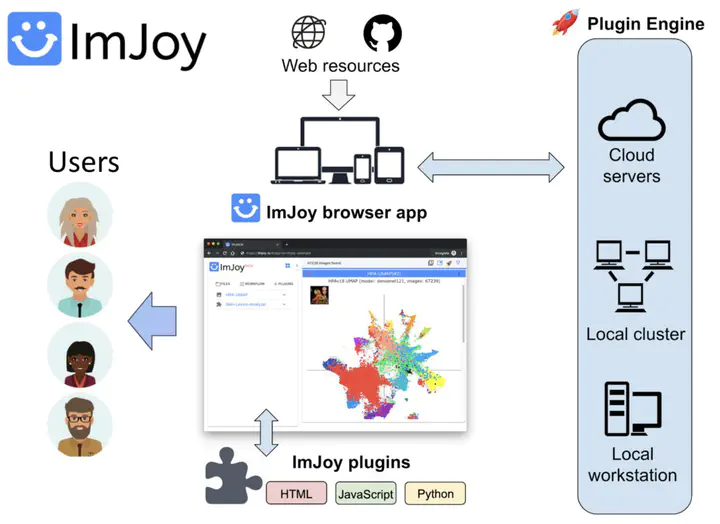ImJoy - Web Data Analysis
 ImJoy
ImJoyDeep learning (DL) methods achieve breakthrough performances in analyzing biomedical data across countless tasks, including medical diagnostics, DNA sequence analysis, augmented microscopy and drug design. Combined with increasing data repositories in genomics, imaging and other fields, such successes underlay a growing demand to adapt DL methods to new datasets and questions1. However, the dissemination of DL approaches faces considerable hurdles. Most published DL studies2,3,4,5 require users to retrain models on their own data to obtain the best performance and/or avoid erroneous results. Although trained models are frequently available through web applications or ImageJ plugins, retraining is typically only possible via scripts or command lines, rather than graphical user interfaces (GUIs). In addition, the complexities of setting up the required hardware and software environments often constitute forbidding obstacles6. Furthermore, the large datasets and computational resources typical of current DL successes pose challenges to traditional desktop-oriented software that tightly couple GUI and computation. Cloud services can partly alleviate these difficulties, but raise privacy and confidentiality issues that can be prohibitive for medical data7. Meanwhile, deploying scientific software to mobile platforms can make them accessible to billions of people8, enabling large-scale biomedical research and citizen science. These opportunities and challenges call for new computational frameworks.
For more information, read our publication on Nature Methods.
Live Demos
This website contains ImJoy integration, you can find some example applications for image visualization below:
Kaibu
ITK/VTK Viewer
To visualize an image with ITK/VTK viewer, click
Vizarr Example
Vizarr be embedded in the page directly:
You can also view the image in a dialog by clicking